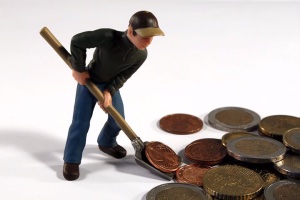LEED v4.1: An Examination Of A Circular Economy
- < 3 Reasons Why Your Building Products Are Not Being Specified
- > Miami Business School Achieves LEED V4.1 Gold Certification
According to the USGBC, a circular economy captures the benefits of materials during their life span and keeps them in circulation for as long as possible. To achieve a circular economy, building materials need to be durable, maintained, repaired when broken, reused at end of life, and be integrated into closed recycling loops. A circular economy aims to decrease costs, embodied carbon and stress on natural resources and ecosystems.
The idea of a circular economy started in 1966 when economist raised the idea of an “open economy” with unlimited input resources and output sinks. A circular economy is influenced by non-linear systems such as natural ecosystems. The model also emphasizes the selling of services rather than products, and the localization of economic activity.
The current linear economy model emphasizes a “take, make, dispose” process that consumes finite resources with the waste dumped in landfills. The architect Walter Stahel coined the term “cradle to cradle” and developed a "closed loop" approach to production processes. A circular economy can help decrease environmental impacts in the construction industry.
LEED 4.1 Examination Of Credits
We will provide an examination of a circular economy and how it relates to LEED v4.1. The Materials and Resources credit category promotes a circular economy by rewarding project teams who pursue LEED credits that optimize materials through their life cycle. Whole building life cycle assessment and material disclosure and optimization are major components of LEED v4.1 and provide project teams many opportunities.
For LEED v4.1 new construction and major renovation projects, MR prerequisites mandate all project teams to decrease construction and demolition waste disposed of in landfills by recovering, reusing and recycling materials. In addition, the prerequisites aim to provide infrastructure that supports storage and collection of recyclables during building occupancy. In a circular economy, material “waste” should be converted into “food” for other processes.
Supply Chain Waste Reduction
The USGBC recommends that LEED project teams look upstream in the supply chain to identify opportunities to eliminate waste before it arrives at the project site. The MR credit Building Life-Cycle Impact Reduction rewards up to five points for building for the reuse, the renovation of an abandoned or blighted building, and the reuse or salvage of building materials from off-site or on-site.
After decreasing upstream waste, project teams can earn additional points by specifying products that are third-party verified to meet circular economy principles: the Building Product Disclosure and Optimization (BPDO) credits, such as Health Product Declarations (HPDs), reward products and materials that disclose material information and meet sustainability criteria.
Specifying Sustainable Materials
Environmental Product Declarations (EPDs) promote a circular economy by providing data that enables project teams to review the impacts of the products they specify. The Sourcing of Raw Materials LEED v4.1 credit defines components of circular manufacturing strategies, including extended producer responsibility, bio-based materials, sustainably harvested wood products, materials reuse and recycled content. Overall, the LEED v4.1 credits promote a closed-loop economy.
Reducing and reusing waste is a primary goal of a circular economy. LEED Zero is a complementary program to LEED that verifies the achievement of net zero goals such as carbon and resources. The LEED Zero program is open to all LEED projects certified under the BD+C or O+M rating systems. The LEED Zero Waste certification is available to projects that have achieved TRUE certification at the Platinum level. TRUE is the most comprehensive zero waste certification available in the market.
How does your organization promote a circular economy? How does your company reduce waste, repurpose materials, and decrease environmental impacts?
For more information or to discuss the topic of this blog, please contact Brad Blank





